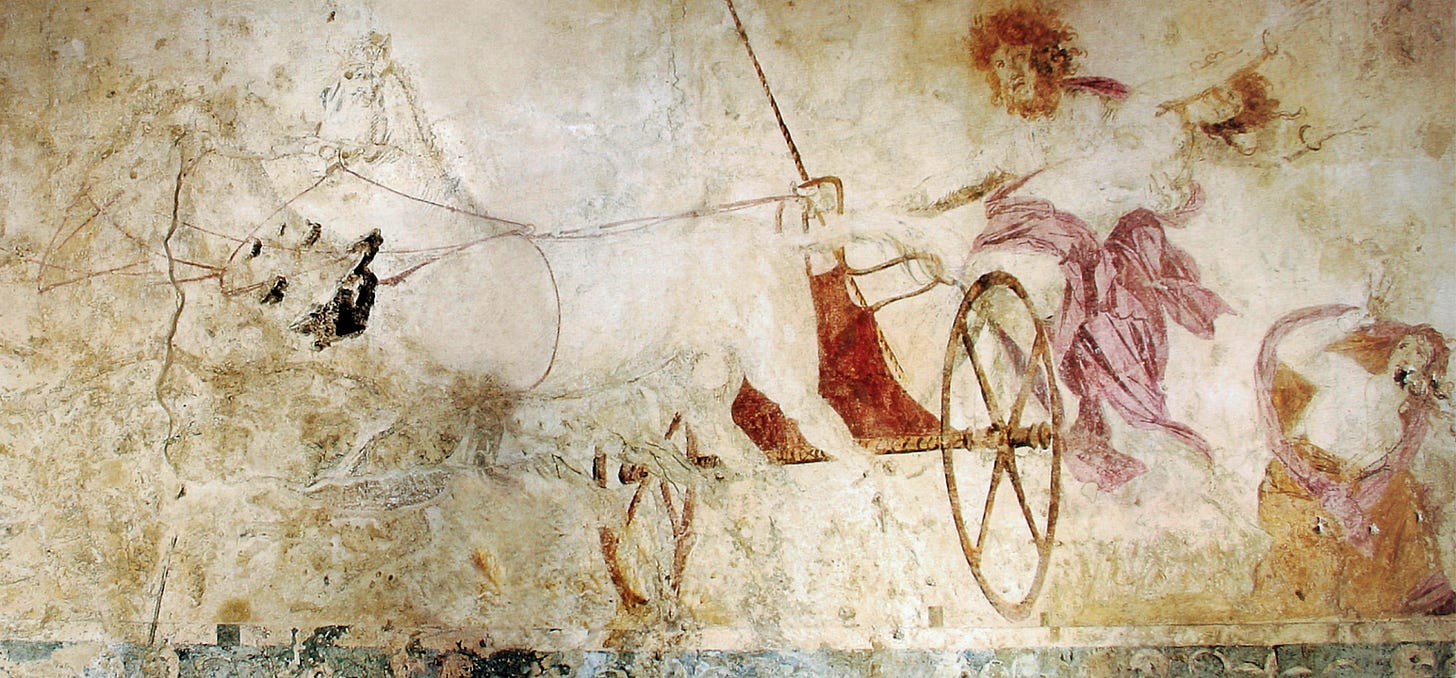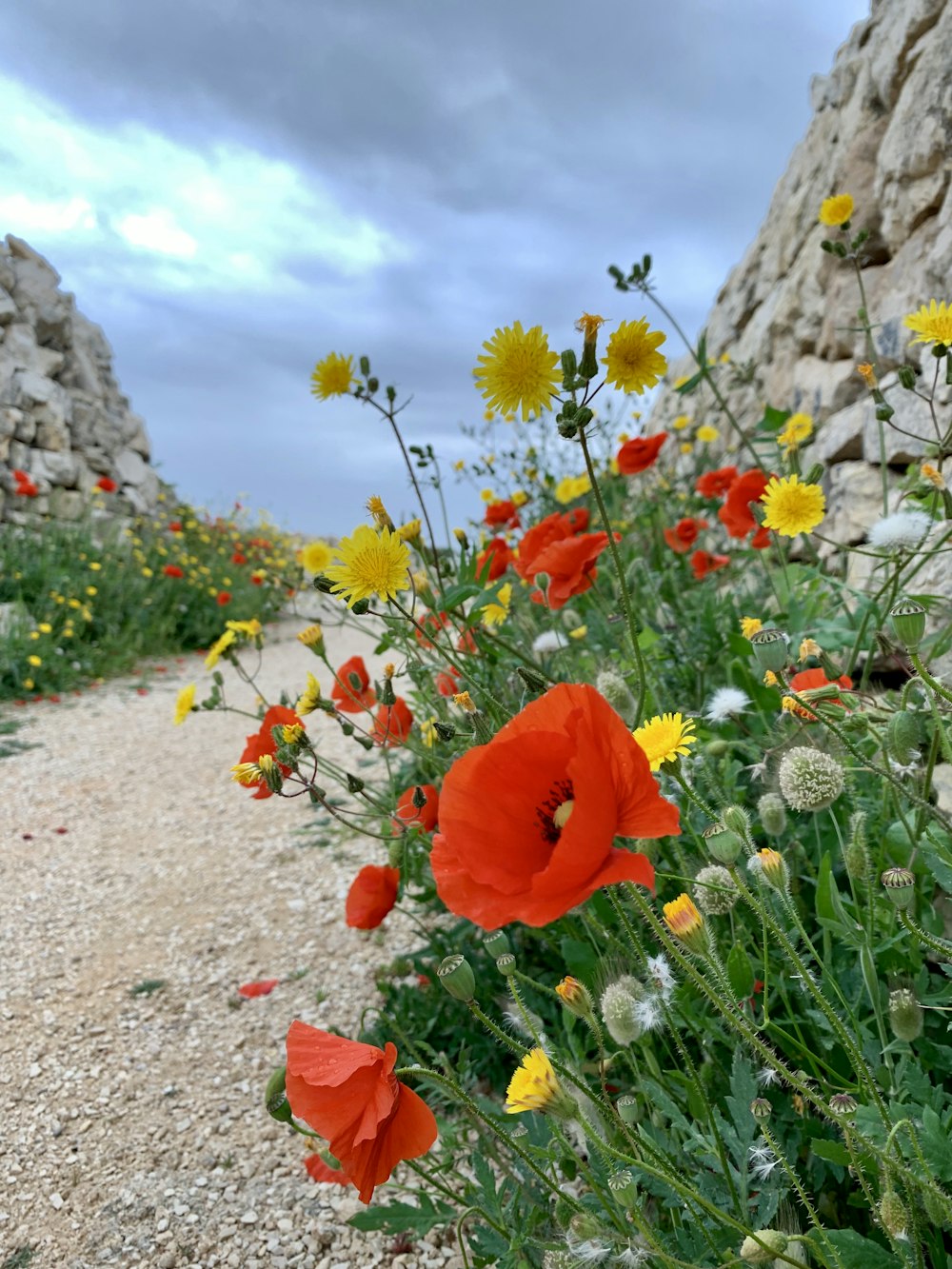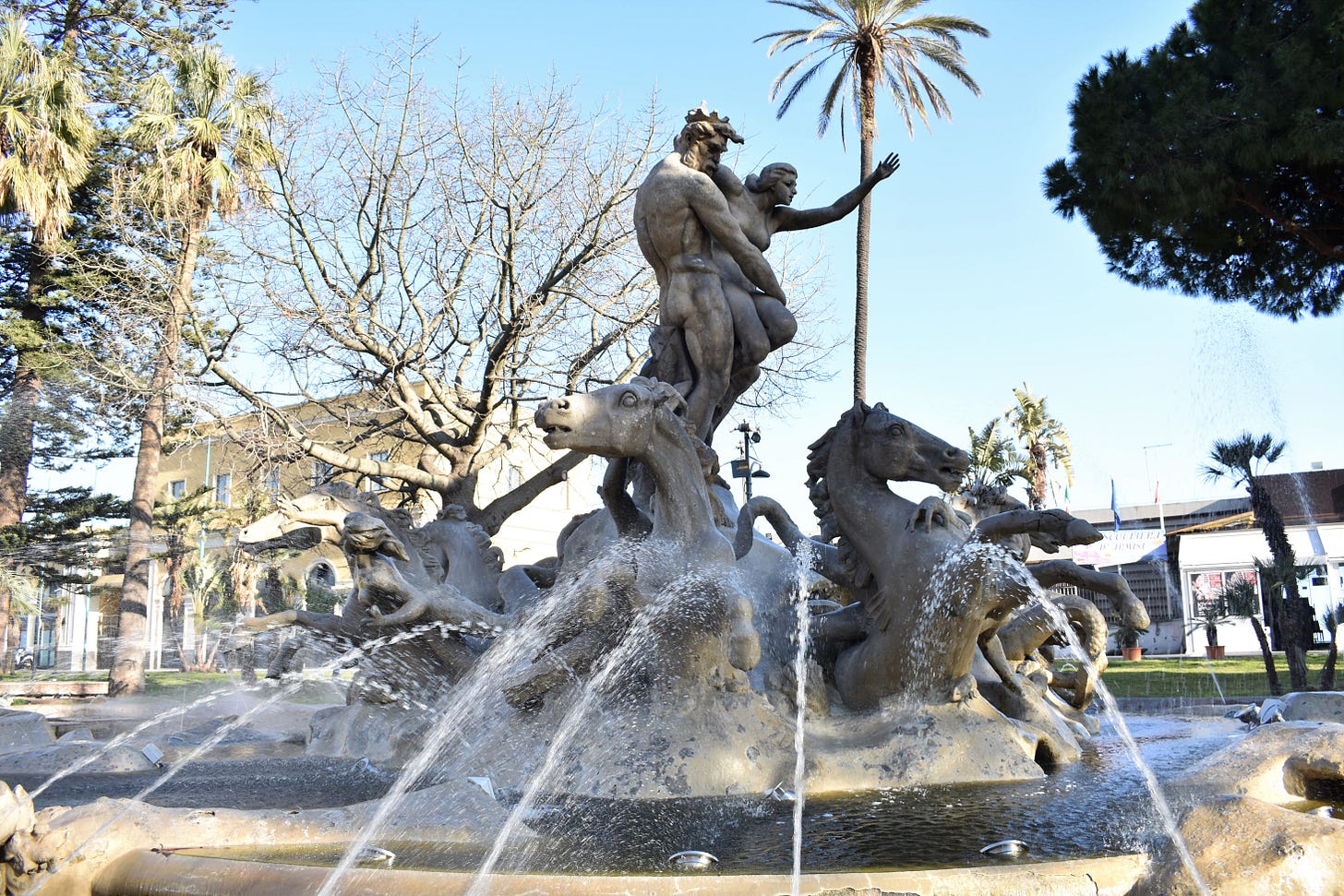The Sicilian🌋Roots of the Persephone Myth
The island the goddess called home. Plus + what SEEDS author Angie Paxton is reading.

One of the most surprising things I learned when researching my novel IN THE GARDEN OF MONSTERS, was how deeply the story of Persephone (Proserpina, in Roman mythology), Hades (Pluto), and Demeter (Ceres) is intertwined with the island of Sicily. Sicily’s lush landscapes, volcanic terrains, and ancient history make it the perfect backdrop for this myth, which explores themes of love, abduction, and the eternal cycle of the seasons.
The myth dates back to at least 800 B.C.E. when Persephone is mentioned in Hesiod’s Theogony, but was popularized worldwide by the Roman poet Ovid in 8 C.E. in his epic poem, The Metamorphoses, V.385-408. In Italy, the story was deeply integrated into Roman culture, where the gods and goddesses took on new names, reflecting the blending of Greek and Roman traditions.

Persephone, known as Proserpina in Roman culture, derives her name from the Latin "proserpere," meaning "to emerge." She was the offspring of Demeter (in Latin, Ceres) and cherished the island of Sicily as her home. The tale of Proserpina's abduction unfolds near Lago di Pergusa, a lake by the town of Enna in central Sicily, where she was gathering flowers. Pluto (Hades) emerged from the volcanic Mount Etna, situated near the coastal city of Catania in Western Sicily, to seize her.
Mount Etna is steeped in ancient mythology, serving variously as the forge of Vulcan, the Roman god of smithing, as the prison for the Titans who stir the earth in their attempts to escape, and as a gateway to the Underworld. In her fright, Proserpina fled from Pluto but was eventually overtaken by the city of Siracusa. Both vanished into the Underworld through a fountain in the Aretusa’s spring. Aretusa was a nymph transformed into a spring by the goddess Diana to evade the amorous pursuits of the river-god Alfeo, a testimony to the ancient Mediterranean belief that wells and springs served as portals to the Underworld.
Today, visitors to Catania can see a striking fountain sculpted by Giulio Moschetti in 1904, depicting the dramatic abduction of Proserpina. The story is not just a myth but a cultural legacy that shaped Sicily’s identity and rituals.
The ancient Greeks built temples dedicated to Demeter (in Italian, Ceres) and Persephone (also called Kore by the Greeks) throughout Sicily, such as the Sanctuary of Demeter and Kore in Siracusa, the Temple of Demeter in Selinunte, and the Sanctuary of Demeter Malophoros in Agrigento. These temples served as important religious centers where Sicilians honored the goddesses and celebrated the changing of the seasons. Additionally, in ancient times, the myth of Persephone and Hades was integral to the Eleusinian Mysteries, religious rites that symbolized the rebirth of land and life.
The myth of Persephone is more than a story of gods and mortals; it reflects the essential agricultural cycles of sowing and reaping, which were vital to ancient Sicilian farmers. Persephone's descent into the underworld signifies the seeding of the earth, and her return marks the start of the growing season, a period of bloom and abundance.

Every spring, Sicilians celebrated Anthesphoria, a festival honoring Proserpina’s return from the Underworld. Women gathered flowers to symbolize the goddess’s reunion with her mother and the renewal of life on Earth.
Turns out that the famous Greek myth is just as Italian after all.
What We’re Reading
How apropos that this week, when I’m talking about Persephone, I have debut author Angie Paxton talking with me about the books she’s reading? Angie’s wonderful new novel, Seeds, is a story of Hades and Persephone with a more classical, dark, atmospheric bent than mine. I was lucky to have an early read of it, and it’s a must for your TBR list! You can find her on her website or on Instagram.
What I Just Finished Reading
The Paradise Problem by Christina Lauren. I love a good romance, and this one ticked all my boxes: fun characters, fake dating, forced proximity, and sexual tension. It was sheer escapism. Such a fun read!
What I Am Currently Reading
I'm currently reading Mother of Rome by Lauren J.A. Bear. Rhea Silvia is a strong, fierce, multi-faceted character who is easy to empathize with and root for. Also, this isn't a story I'm familiar with, and I'm enjoying being introduced to something new (to me) in the realm of myth retellings.
What I’m Looking Forward to Reading
On the top of my TBR pile is a book called Sleep In Peace by Melanie Doctors. It's about a woman who finds out her mother lied about her father's death, and he isn't actually dead. I'm drawn to books that explore mother-daughter relationships, and this one sounds particularly drama-filled, so, of course, I can't wait to dive in!
What’s Bringing Me Joy This Week
I recently discovered the band Warhaus and was absolutely mesmerized by this strange video.
😂
Arnold Newman, Salvador Dalí, 1951.
If you love food and love Italy and haven’t read THE CHEF’S SECRET or FEAST OF SORROW, click the links to learn where to buy your copy! 🍒🍗🍷 And now you can get my third novel, IN THE GARDEN OF MONSTERS!
Follow me in these places: Website | Instagram | Facebook | Threads | Bluesky









I love your newsletters! I always learn something. I've enjoyed all your books! Just thought I'd mention the recent release "Tartufo" by Kira Jane Buxton -- much fun! All lovers of Italy should enjoy it.
Thank you once again for your informative newsletter.